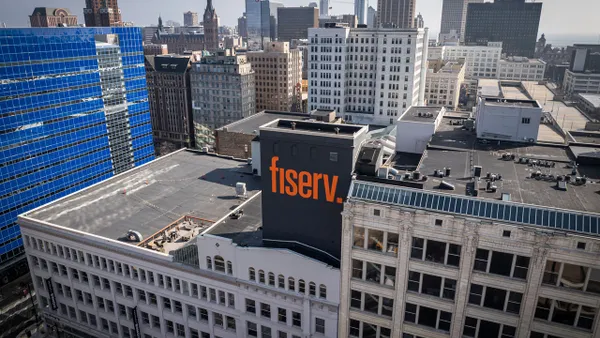American Express is luring more cardholders and its younger customers are spending more than in the past, CEO Steve Squeri said on an earnings conference call last week.
The New York-based company attracted 2.6 million new card customers in the third quarter, almost double the number it gained in that quarter last year. Meanwhile, spending by Amex cardholders climbed four percent to a third-quarter record, Squeri said in its recent press release on earnings. It also indicates that Amex's rising marketing spending is paying off.
Squeri is particularly pleased with the attention the cards are getting from millennials and Generation Z consumers, he told analysts on the Oct. 22 call. Those are people roughly between the ages of 25 and 40.
While an Amex spokesperson wouldn’t say what percentage of the new cardholders are in that age range, younger cardholders are outspending their elders. Amex spending by the millennial and Gen Z cardholders soared 48% for the quarter, compared to the period last year, the company said in an investor presentation. Meanwhile, that quarterly spending for older Baby Boomers, who were likely more cautious about travel and entertainment choices during the pandemic, rose just 25%.
Even more striking was the comparison to 2019, before the deadly COVID-19 pandemic put a damper on consumer spending last year. According to the company, the younger group increased spending 38% during the third quarter this year compared with 2019, while spending by baby boomers contracted 6%.
“We’re talking about over 70% millennial and Gen Z acquisition in a platinum card, where we just raised the fee to $695,” Squeri said on the Oct. 22 call with analysts. “So, it’s obviously speaking to that base.”
That’s a coveted age group for any company seeking to attract and cultivate the next generation of consumers. And it’s a particular benefit for Amex at a time when corporate and cross-border travel spending remains depressed, primarily due to the pandemic.
According to Squeri, offering benefits for travel accommodations, streaming services, workout clubs like Equinox, and event tickets attracted younger consumers.
One area where the card company may have less appeal for a younger audience is cryptocurrencies. The digital currencies have risen to lofty valuations thanks to a new generation embracing the borderless, non-fiat form of money.
Still, Squeri doesn’t expect crypto to gain widespread acceptance as a form of payment anytime soon and doesn’t see it as a threat to traditional credit card payments either, he said.
Marketing Push
“If you would have asked me at the beginning of the year, would we invest almost $5 billion in marketing this year, I would have said ‘no,’” Squeri said on the call.
According to a regulatory filing, that marketing budget appears to align with past spending, based on $6.75 billion for marketing and business development last year and $7.13 billion for it in 2019.
“But I think the key point is we’re spending that money to grow the business profitably,” he said, emphasizing the new cardholders are not only younger, but they also have better credit profiles and are generating more fees for the company.
By comparison, larger card rival Visa, albeit with a different business model, spent about $1 billion on marketing for the 12 months ending on Sept. 30, according to its earnings report this week.
Justifying the marketing, Amex Chief Financial Officer Jeff Campbell noted that the company is generating more revenue from the marketing investment than before the pandemic.
For the first nine months of the year, Amex's revenue rose 13% to $30.2 billion, relative to the period last year, the company said in its third-quarter earnings report. Net income climbed nearly fourfold to $6.3 billion for the nine months close to last year, when the onset of the pandemic decimated travel and restaurant sales.













